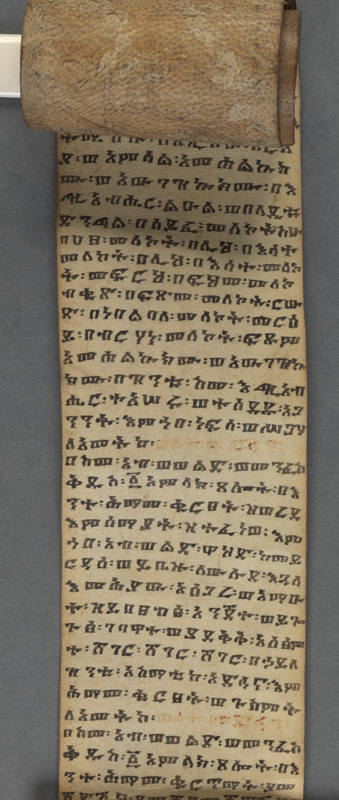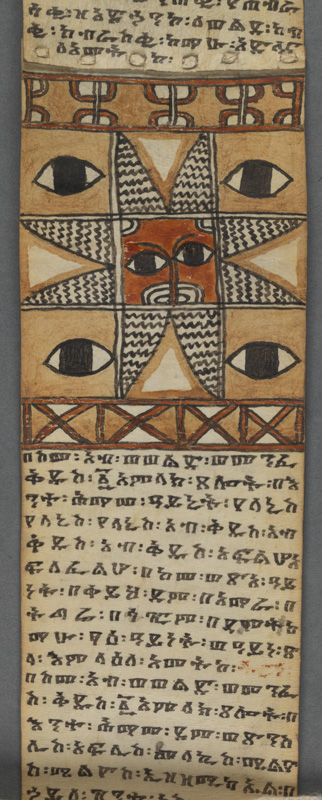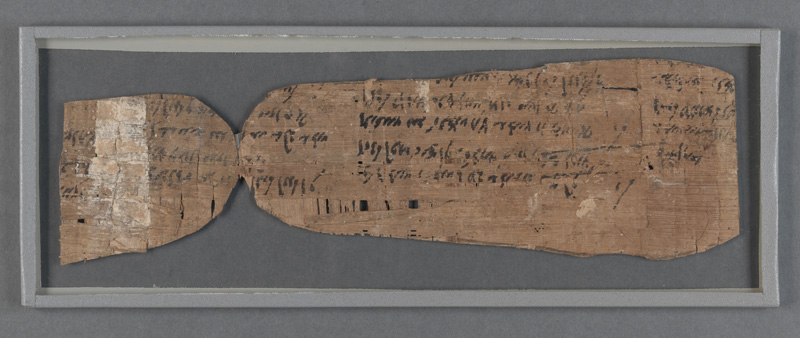What do you do with that?
The collections in the Old Library contain objects dating from the 13th century BC to the present day, including many unusual items - gold torcs, death masks, paintings, harps, and hats - all of which require specialist approach to their care. For most of these, good documentation, minimal interventive treatment, and safe housing solutions are the best options.
The collection of Greek and Roman papyri is currently being assessed and the first treatment phase is underway. This includes minor stabilising repairs, cleaning, and mounting.
Treatment of numerous rolled items, from large cartoon drawings from the Harry Clarke Stained Glass Studios, to parchment scrolls from Ethiopia, has protected them from risk of damage in storage.
Small collections of objects such as Sumerian cuneiform tablets and Egyptian Osiris figurines have been surface cleaned and custom-made storage boxes have been created for them to enable safe transport to and from the research reading rooms.
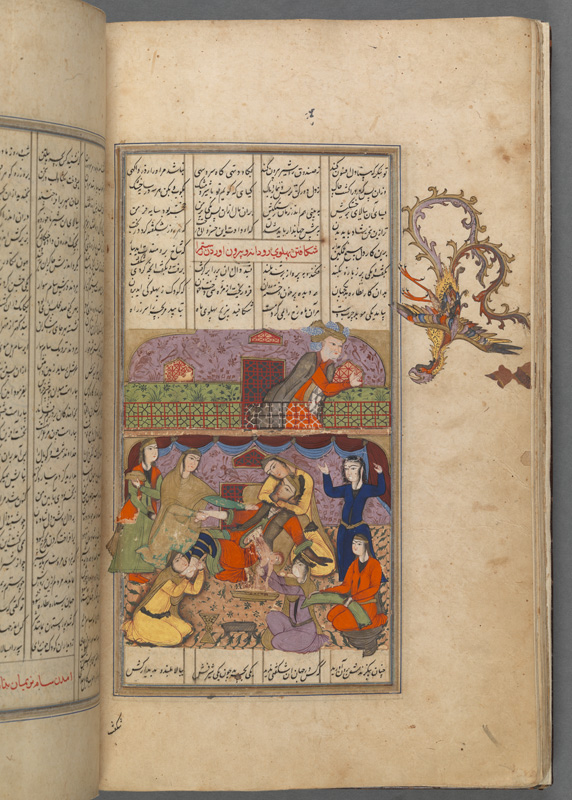
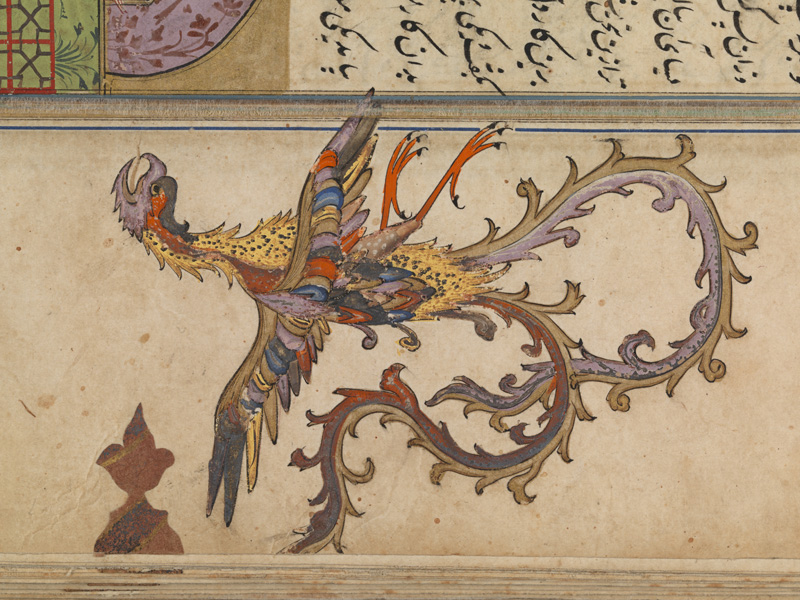

Shahnama or 'Book of Kings'
17th century
This epic poem tells the history of Iran (Persia) since the time of the first kings; it was written in the year 1010 by the Persian poet Firdausi.
This beautifully decorated manuscript had become extremely fragile due to the aging effects of some of the materials used in its creation. The copper pigment used to rule the text panels had degraded the paper and they had become detached. They were repaired with Japanese paper. The manuscript was resewn, new end-bands applied replicating the originals, and the cover repaired and rebacked.
MS 1549 folio 48r-47v
Ethiopic religious texts with illustrated miniatures painted on vellum
date unknown
These tightly bound scrolls have a new housing system for storage. This includes an archival internal supporting core and an external acid-free wrapper. Custom-built boxes ensure safe storage and handling. Here they are displayed partly open to reveal text and decoration.
MSS 3809 - 3810
Greek papyrus
262 - 200 BC
This mounted fragment of Greek papyrus is from the W.Flinders Petrie collection, which came from extensive cemetery excavations in Gurob, Egypt in 1890. Scraps of papyrus, such as this one, were used as padding within mummy casings and now provide a record of the social history of the ordinary individual in Ptolemaic Egypt. They include miscellaneous fragments of private letters, legal and financial records, bills and agricultural transactions. The fragment is secured to the glass mount with several small paper tabs, permitting safe viewing of the front and back of the item.
TCD Pap.E.51
Egyptian faience Ushabti/Osiris figurines
date unknown
These glazed pottery figures were placed in tombs to act as servants in the afterlife.
Produced in large numbers in mummiform shape possibly from moulds, they often contained inscriptions incorporating the name and title of the owner and texts from the Egyptian Book of the Dead. These figurines were surface cleaned, wrapped in acid-free tissue and stored in custom- built housing.
TCD OBJECT ND/8, 9
Byzantine oil lamp
c. 5th century
Red terracotta lamp with foliate motifs stamped in relief. The lamp is in excellent condition. It has been lightly surface cleaned and custom-built housing has been provided for safe storage.
TCD OBJECT 2003/5

